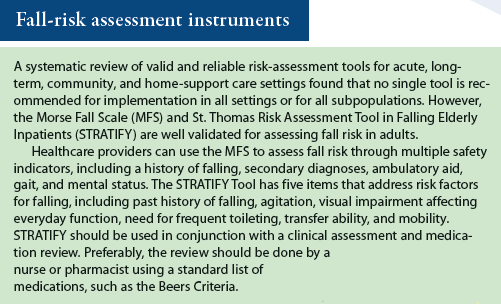Some Known Questions About Dementia Fall Risk.
Table of ContentsThe Facts About Dementia Fall Risk UncoveredDementia Fall Risk Things To Know Before You Get ThisWhat Does Dementia Fall Risk Do?Getting My Dementia Fall Risk To WorkIndicators on Dementia Fall Risk You Should Know
You could be anxious since you've had a loss before or because you have actually discovered you're starting to really feel unstable on your feet. You might have seen modifications to your health, or simply feel like you're decreasing a little. Whatever the factor, it isn't unusual to come to be cautious and shed confidence, and this can quit you doing things you made use of to do and make you really feel much more separated.If you've had a loss or you've begun to feel unstable, tell your medical professional even if you really feel great otherwise. Your medical professional can check your equilibrium and the way you stroll to see if improvements can be made. They may have the ability to refer you for a falls danger assessment or to the drops prevention service.
This details can be obtained with meetings with the individual, their caretakers, and a review of their medical documents. Begin by asking the individual about their background of drops, consisting of the regularity and circumstances of any recent falls. Dementia Fall Risk. Inquire about any kind of movement problems they may experience, such as unstable or difficulty walking
Conduct a detailed review of the individual's drugs, paying certain attention to those known to boost the risk of falls, such as sedatives or medicines that reduced blood stress. Determine if they are taking several medicines or if there have actually been current changes in their medication regimen. Assess the person's home atmosphere for possible threats that could enhance the danger of falls, such as bad illumination, loose rugs, or absence of grab bars in the washroom.
Some Known Facts About Dementia Fall Risk.
Overview the individual via the fall threat assessment kind, explaining each concern and recording their actions accurately. Compute the total danger rating based on the feedbacks supplied in the analysis type.
This strategy may consist of workout programs to enhance toughness and balance, drug adjustments, home adjustments, and references to other experts as required. On a regular basis keep track of the person's progression and reassess their risk of drops as required. Modify the treatment plan based upon adjustments in their health condition or home setting. Provide continuous education and support to advertise safety and security and reduce the danger of drops in their day-to-day living tasks.
Many studies have shown that physical treatment can aid to reduce the risk of falling try this out in grownups ages 65 and older. In a brand-new research (that considered drops danger in women ages 80 and older), scientists computed the financial effect of selecting physical therapy to stop falls, and they located that doing so saves $2,144, including all the surprise prices of your time, discomfort, missed life occasions, and the bucks paid for solutions.
Some Known Details About Dementia Fall Risk
Examining your equilibrium, strength, and strolling ability. A home security analysis. Based on the assessment results, your physical specialist will certainly develop a strategy that is tailored to your particular demands.
Older adults that have trouble walking and chatting at the exact same time are at a higher danger of falling. Dementia Fall Risk. To assist raise your safety throughout day-to-day tasks, your physical therapist may make a training program that will test you to keep standing and walking while you do an additional task. Examples consist of walking go to these guys or standing while counting backwards, having a discussion, or bring a bag of grocery stores
Set goals for boosting their physical activity. Exercise much more to enhance their toughness and balance. These programs typically are led by volunteer trains.
See This Report on Dementia Fall Risk

Measles, or rubeola, is a very contagious, acute viral contagious illness brought on by the measles infection. Some individuals think about measles as simply a breakout and high temperature that gets rid of up in a couple of days; nevertheless, measles can trigger severe health and wellness issues, specifically in children more youthful than 5-years-old. The most effective security versus measles is the measles, mumps, and rubella (MMR) vaccination.
Autumns are a typical cause of injury amongst older adults.
How Dementia Fall Risk can Save You Time, Stress, and Money.

She has a case history of seizure disorder and hypertension. She is obtaining an IV infusion and taking Gabapentin and Lasix. She has no background of drops, her gait view website is consistent, and she invalidates with no problems. The previous registered nurse states that she calls for help to the bathroom when she needs to go.
Instances of common autumn interventions/measures include: Making certain a client's crucial items are accessible. Placing the person's bed rails up with the alarm system on. Assisting a client while they're getting up from bed. Past recognizing how to utilize the Johns Hopkins Autumn Threat Assessment Device, it is essential that facilities integrate its usage into a more detailed loss avoidance strategy.